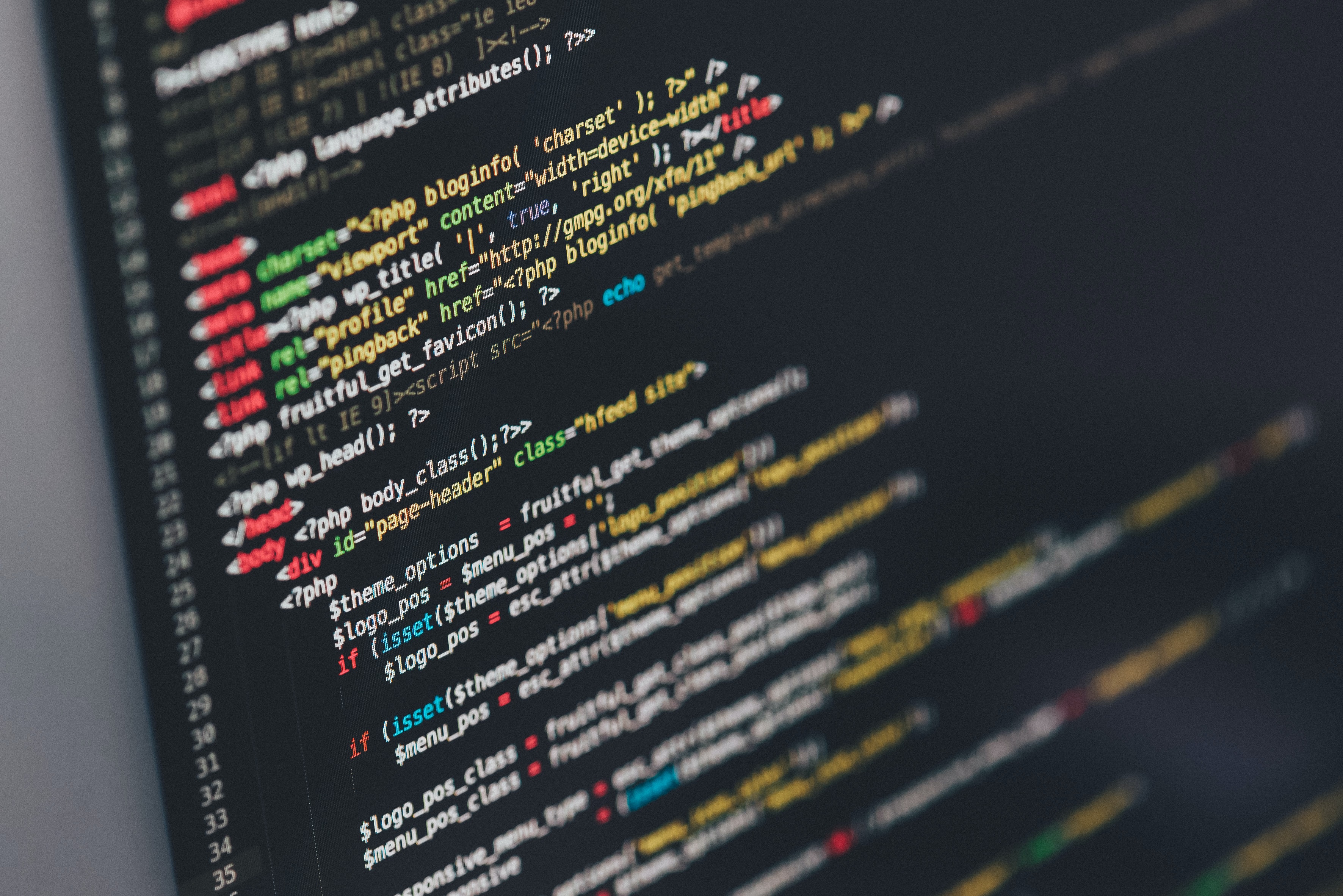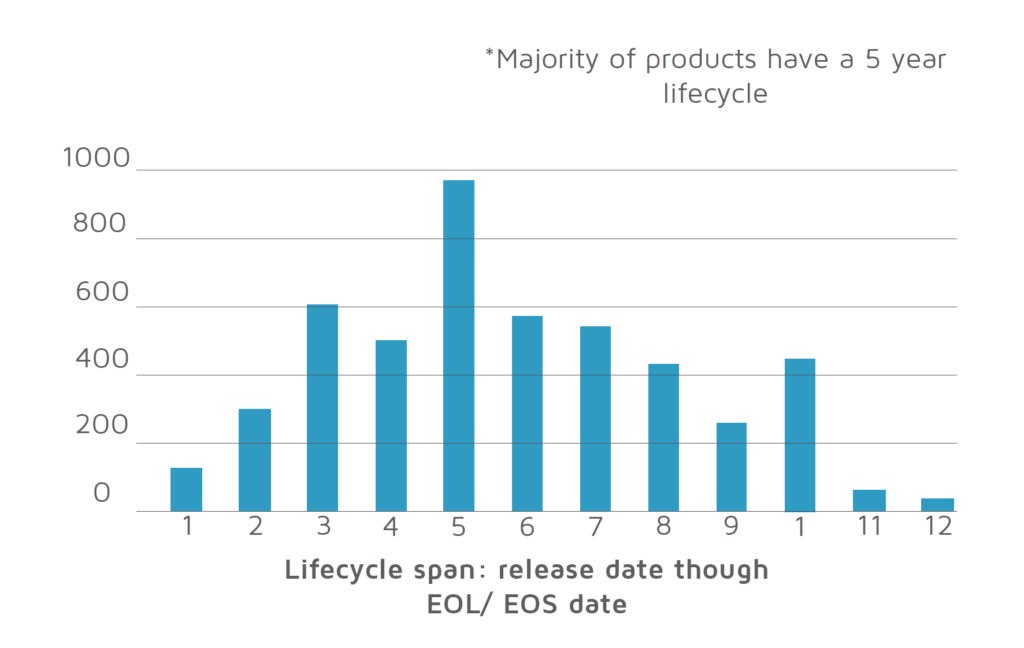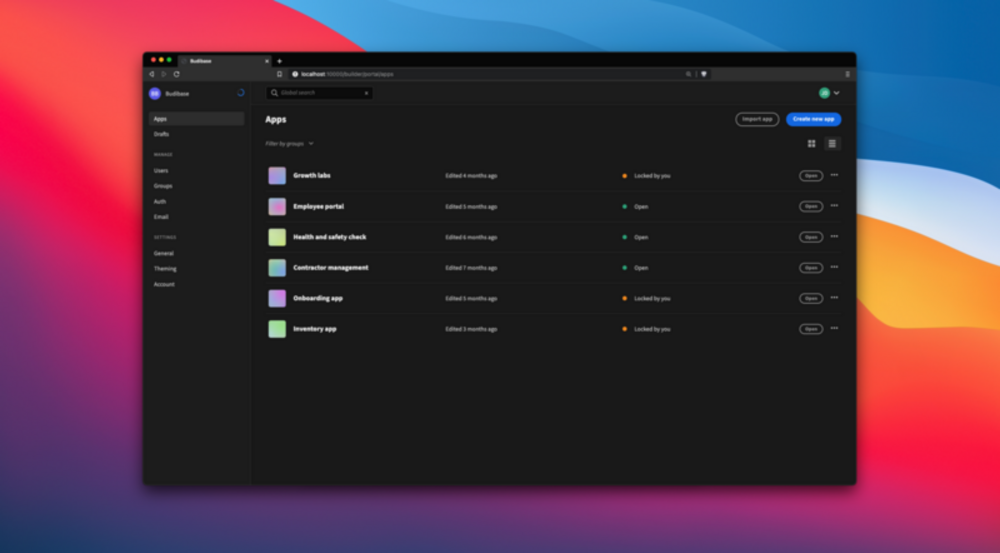4 Low-Code Legacy Application Modernization Strategies
Most organizations will eventually encounter the need for legacy application modernization. Over time, older systems might not deliver the value they once did. This can be because of changing needs, new technologies, or emerging risks.
In any case, it’s critical that your software stack stays up to date with your current needs.
At some point, every tool needs to be replaced, retired, or rebuilt. This is basically a cost-benefit question. When a legacy application becomes more hassle than it’s worth, it’s time to modernize.
Traditionally, legacy application modernization has been fraught with challenges. Today, we’re going to look at how the rise of low-code has changed this.
Let’s start with the basics.
What is a legacy application?
A legacy application is an old or outdated system, which is still necessary for your operations. In other words, this is something that your team uses, because they have to, not because it is the best tool for the job.
Legacy systems have a number of key characteristics:
- Limited functionality,
- Security issues,
- Poor UI,
- Lack of integration with other tools,
- Outdated design.
Many businesses stick with legacy tools long past their sell-by date, because replacing them seems too expensive or disruptive.
Often, legacy apps aren’t even supported by their original manufacturers anymore. Businesses then have to pay custom developers to modify, patch and maintain their systems, to keep them operational.
Nowadays, the typical software lifecycle is only a few years, according to Flexera :
What is legacy application modernization?
Modernization means updating, improving, or replacing legacy applications with modern tools. The most obvious example of this is retiring a system entirely, and replacing it with a newer alternative.
However, this isn’t always possible.
For example, your legacy system might be built around your internal processes. Switching to an entirely new platform might not be possible because of this. In extreme cases, a modern alternative might not even exist.
Organizations might also stick with legacy systems because they host business-critical data. Replacing these tools carries the risk of data loss, which might be seen as too great a risk.
In cases where wholesale replacement isn’t a viable option, legacy application modernization seeks to replace, update or amend individual components within the system. This involves stripping out critical components and modernizing everything else.
A basic example of legacy modernization would be adding a more functional and user-friendly front-end onto a legacy dataset. You might also like our guide to making an app from Excel spreadsheets .
Legacy app modernization strategies
Of course, every modernization strategy is different. The extent of work required largely depends on the current state of your legacy apps. This helps you to identify the specific need for modernization. In turn, this informs the kind of modernization strategy you should employ.
Common issues which trigger modernization projects include:
- Outdated security standards,
- The need for additional features,
- Ineffective UIs,
- Dependency on other legacy tools,
- Lack of support,
- Compatibility issues,
- Lack of integrations,
- Poor scalability,
- And more.
Based on these different key issues, there are seven core legacy application modernization strategies. These are:
- Encapsulation - Where a legacy app is left in its original state, and connected to a new interface via an API.
- Rehosting - Where the entire app is moved to a new host, to improve security. This is usually a cloud-based platform.
- Refactoring - Where the underlying structure and code of a legacy app are modernized, but external behaviors are left unaltered. This is also known as code modernization.
- Rearchitecting - This means materially changing the underlying architecture of a legacy app, to move it to different software architecture, with enhanced capabilities.
- Replatforming - Where a legacy app is moved to a more modern platform. This may require some changes to the app’s code, but not its features, functionality, or overall structure.
- Rebuild - Where some or all of a legacy app is rebuilt from scratch, with similar specifications.
- Replace - Where some or all of the legacy app is rebuilt from scratch, with completely new scope and specifications.
Why should I modernize my applications?
Even though legacy applications might be necessary for certain business functions, they carry a number of serious drawbacks. In fact, maintaining legacy systems can bring a number of hidden costs and risks.
Here are some of the key challenges which modernizing legacy applications can overcome.
Security
Businesses today face an ever-changing security environment. New cyber risks are constantly emerging. Your business tools need to keep pace with this change. Unfortunately, for legacy applications, this is easier said than done.
Legacy systems often require custom patches to implement modern security protocols. This is a common problem when the original developer no longer supports a platform.
Using legacy apps can also have wider security implications. For instance, if a legacy app lacks compatibility with modern hardware, browsers, or operating systems, you’re forced to compromise on having the most up-to-date and secure systems in place.
Cost
The biggest challenge with legacy systems is the cost of keeping them running. It’s easy to get locked into ongoing costs when replacing systems seems too complex.
Often, older systems are incredibly complicated, by modern development standards. Since legacy apps often evolve over time, they can be built with a variety of older or outdated tools and languages.
As such, developers with the skills to maintain legacy systems are often specialists, carrying a high price tag. You might also like our round-up of in-house development examples .
Risk
Legacy applications introduce unnecessary risks into your software stack. As we’ve already seen, older systems carry greater security vulnerabilities. There is also typically a greater risk of system outages and downtime, compared to more modern systems.
Beyond this, there is the risk of falling behind your competitors. Legacy systems are unlikely to offer the same user experiences or levels of service. This means that competitors with more modern tools can benefit from reduced costs and improved customer experiences.
Functionality
It’s unlikely that an application built 20 years ago will do everything that you need it to do today. Reliance on legacy systems can greatly reduce the features and functions which you can access. This leads to suboptimal workflows.
Even where functionality can be added to legacy tools, this is often costly and time-consuming.
Compatibility
Poor compatibility is a common trigger for legacy application modernization. The better your internal tools work together, the more efficient your processes are. Legacy systems are notoriously incompatible with modern software stacks.
This can lock you in to using outdated hardware or limit how you can use other applications. Naturally, this can have a massive knock-on effect in terms of costs, security, and operations.

Image credit: @Sigmund via Unsplash
Compliance
These days, the software businesses use is more heavily regulated than ever. Post-GDPR, you’re also facing an ever-more complex regulatory environment, with different jurisdictions implementing their own privacy legislation.
This makes maintaining compliance incredibly difficult with legacy apps. In many cases, this simply makes maintaining older software unviable.
Efficiency
The efficiency of your business tools has a massive impact on profitability. Legacy tools generally have poor UIs, creating the need for extensive training for users. This increases the cost of onboarding new staff.
Even when users are fully onboarded, legacy applications still offer inefficient workflows. This can stem from slow load speeds or overly complicated interfaces. This leads to simple tasks taking longer than they should, creating excessive operational costs.
Legacy software support
One of the key characteristics of legacy software is that its original maker no longer supports it. When bugs and vulnerabilities emerge, users are on their own. For businesses, this is a major problem.
This also means the users are responsible for implementing any new features which they might need in the future.
In other words, businesses that use unsupported legacy software must either live with a suboptimal system, or manage changes, updates, and patches themselves. This inevitably leads to the need for modernization.
Legacy modernization issues & challenges
Of course, if modernization was as simple as retiring one tool and implementing another, legacy applications wouldn’t be so common.
Unfortunately, modernization brings along its own risks, costs, and challenges. As such, it’s crucial to choose the right application modernization strategy.
Traditionally, modernization has been a costly, complex, and risky process. As such, many organizations don’t take action. However, with the rise of new legacy modernization tools, including low-code platforms like Budibase, this is changing.
Here are the key factors which have historically prevented legacy application modernization, and how the rise of low-code is helping to overcome these challenges.
Disruption
There’s no getting around the fact that legacy app modernization can be disruptive. If your business relies on a particular tool, then moving away from this tool will naturally disrupt your operations. This can come in the form of downtime, interruptions, new processes, or the need to upskill users.
Replacing legacy systems entirely is incredibly disruptive.
The question is whether the benefits of modernization outweigh this.
The key to effective app modernization is minimizing disruptions while maximizing the benefits of adopting new tools. With low-code development tools, it’s easier than ever to shift this balance in your favor.
One challenge of modernization has always been getting new tools deployed quickly, to minimize disruption. With low-code tools, you can develop business apps in a fraction of the time.
Cost
Of course, modernization has historically been expensive too. If you choose to replace legacy systems entirely, you essentially have two options:
- Off-the-shelf solutions.
- Custom development.
If an off-the-shelf tool doesn’t exist, custom development is your only option.
Besides, neither of these options is cheap. Because of this, many businesses avoid the up-front costs of replacing legacy systems, even though the ongoing costs of sticking with outdated apps might be even higher.
You’re generally limited to custom development if you want to retain some elements of legacy applications, but modernize others. Depending on the architecture and build of your existing tools, this can actually work out more expensive than full-on replacement, once you find someone with the required skills.
Again, the rise of low-code changes everything here.
Low-code development massively reduces the cost of creating and maintaining business tools. With low code legacy modernization, you can create custom apps, in minutes.
 Image credit: @ilyapavlol via Unsplash
Image credit: @ilyapavlol via Unsplash
Data loss
One of the major barriers to modernization is the fact that legacy applications are often used to store critical business data. If you’ve been using a platform for several decades, chances are you’ll have built up a dataset that is all but irreplaceable.
Many businesses avoid modernization, for fear of data loss.
Traditional approaches to modernization inevitably involve data migrations. Anyone with a small amount of development experience can tell you that this is a risky process. Of course, with adequate contingency planning, most of these risks can be avoided.
However, many businesses remain wary.
Low-code modernization offers a number of advantages here. For example, you might have a legacy application where the back-end data components are fit for purpose, but other elements are in need of modernization.
In this case, you can simply build a new front-end application, and use a variety of modern data connectors to access legacy databases.
Where migration is unavoidable, modern low-code development allows you to reproduce existing databases, before quickly and easily building new apps around them. That way, you can leave your legacy systems in place until you’re confident that all critical data has been carried over.
Scope creep
Scope creep is a common legacy modernization issue. Essentially, this means trying to solve one problem, and realizing that there are other issues at play that need to be resolved.
For example, you might try to upgrade or replace one element of a legacy system, only to find that this requires changes to other components. The trouble is, scope creep almost always comes along with rising costs.
With low code legacy modernization, scope creep is a non-issue.
Since building apps with low-code tools takes a fraction of the time, implementing unforeseen fixes and features has a much less disruptive impact on your overall project. Even better, if you don’t have to pay to develop your new apps, there’s no chance of going over budget.
How to modernize legacy applications with low-code tools
So how can low-code tools be used to modernize legacy applications? Recall that earlier we said there are seven basic strategies for modernizing legacy apps.
These are:
- Encapsulation,
- Rehosting,
- Refactoring,
- Rearchitecting,
- Replatforming,
- Rebuilding,
- Replacing.
Low-code development is a particularly effective strategy for encapsulation, rebuilding, or replacing legacy applications. Additionally, low-code tools can be used as an alternative strategy to rehosting, refactoring, rearchitecting, and replatforming.
Here are our four essential strategies for low-code legacy app modernization.
1. Replacement and rebuilding
Rebuilding and replacing legacy systems are generally the most effective modernization strategies. However, they’ve also historically been seen as the most involved and costly. That is, building new apps or components takes time and money.
At least, it used to.
With low-code legacy modernization tools like Budibase, rebuilding and replacing business apps has never been cheaper or faster. We’re reducing the barriers to modernization, by empowering businesses to rebuild and replace tools in minutes.
2. Extension
When rebuilding and replacing apps seemed too expensive, many businesses turned to refactoring, rearchitecting, or replatforming legacy tools. Historically, this has been the most efficient and cost-effective way to add new functionality to legacy applications.
Low-code development has all but made this a thing of the past.
In many cases, you can easily extend the functionality of legacy apps, without the need for extensive changes to their code, architecture, or configuration.
Modern low-code tools offer the ability to build simple, single-function applications, in minutes.
These can then be connected to existing databases, or deployed as extensions to legacy platforms, adding new functionality or workflows, without substantially changing your existing platform.
3. Encapsulation
As we said earlier, encapsulation involves leaving a legacy application in its original state but adding a new interface, which is connected via an API. This is probably the easiest way to improve functionality and usability.
The key challenge here is building an effective interface for your modernized system.
Once again, modern low-code development is the most effective way to do this. Rather than struggling with an off-the-shelf solution, or paying out for custom development, low-code development offers deployable interfaces, in minutes.
With an encapsulation strategy, there is no need to alter the legacy code or deployment. Low-code eliminates the development costs of building a new interface, effectively making this kind of modernization cost-free.
4. Hybrid approaches
A hybrid approach is when you use two or more of the seven core modernization strategies, in conjunction. Most often, this means rehosting some elements of your legacy apps to improve security.
You can then use one of the other strategies, like legacy application replatforming, to improve functionality.
The classic example of this would be migrating legacy datasets to a modern, secure host. You can then rebuild or replace other elements of your legacy application, to manipulate, use, and manage this data.
Modern low-code builders offer extensive support for different kinds of existing databases. Quickly build a new and improved interface, and connect it to your existing data, wherever or however you choose to host it.
Budibase & low-code legacy application modernization
At Budibase , we’re revolutionizing the way businesses build software. Our mission is to create the world’s largest suite of business tools.
Here’s why Budibase is the smartest and most effective way to modernize legacy applications.
Our open-source, low-code platform
Budibase is the leading open-source, low-code app builder. With minimal technical knowledge, you can create functional and featured-packed business tools, in minutes. Our intuitive builder makes it quick and easy to customize design and interfaces.
We also offer a vast library of powerful built-in automations, which can be triggered from any in-app action. Our built-in JavaScript editor also makes it easy to add functionality to any element within your app.
Unlike other low-code builders, Budibase is totally free and unlimited. We don’t charge hidden fees to build multiple apps or add extra users. We even offer free SSO across all of your Budibase tools.
Check out our range of Budibase templates , to help get you started.
Deploy anywhere
With Budibase, you have complete control over how and where you deploy your modernized applications. Choose from self-hosting, managed infrastructure, or our Budibase Cloud environment.
Use Budibase apps internally, or as a web app. We offer complete support for Kubernetes, Docker, Docker Compose, and Digital Ocean, giving you the flexibility to deploy Budibase apps to your own infrastructure.
Connect to existing data sources
Budibase is built to work seamlessly with existing data sources. We offer support for a wide variety of data connectors, making it easy to access, manage, and manipulate legacy databases from Budibase apps.
Connect new or rebuilt apps to legacy data sources and tools, using MySQL, Postgresql, S3, Airtable, Rest API, CouchDB, MongoDB, and more. We also offer support for manual CSV uploads, along with our internal BudibaseDB.
Integrate with your software stack
One of the most common reasons for legacy application modernization is a lack of compatibility with newer tools. Budibase apps offer superior levels of integration with third-party apps.
Use Zapier, Webhooks, and more to connect your rebuilt apps to a range of existing tools, for improved workflows, and reduced admin time. You can also set up actions within Budibase apps, triggering automations in third-party tools.
Future-proof business tools
As you carry out application modernization, it’s important to consider the new solution’s lifespan. After all, you don’t want to go to the effort of modernizing tools, only to have to repeat the process in five or ten years.
With open-source business software from Budibase, your tools are completely future-proof.
Our users have complete control over how and when they roll out new features. With our intuitive app builder, there’s no need to wait for major developers to release new functionality. Simply do it yourself, as and when you need.
Budibase also offers unrivaled scalability. Build additional apps, or add new users, at no extra cost. We empower users to build the perfect tools for their needs, so they can evolve as their business grows.
Budibase is the smart way to modernize tools and add SSO to legacy applications.
We also offer premium support and SLAs for enterprise customers. Check out our pricing page for more details.
Start modernizing legacy applications today
The rise of low-code has completely changed the way businesses modernize legacy applications. From eliminating development time to reducing cost barriers, today, low-code development is the smart way to modernize software.
To begin rebuilding, replacing, or encapsulating your legacy tools, sign up to Budibase today.

